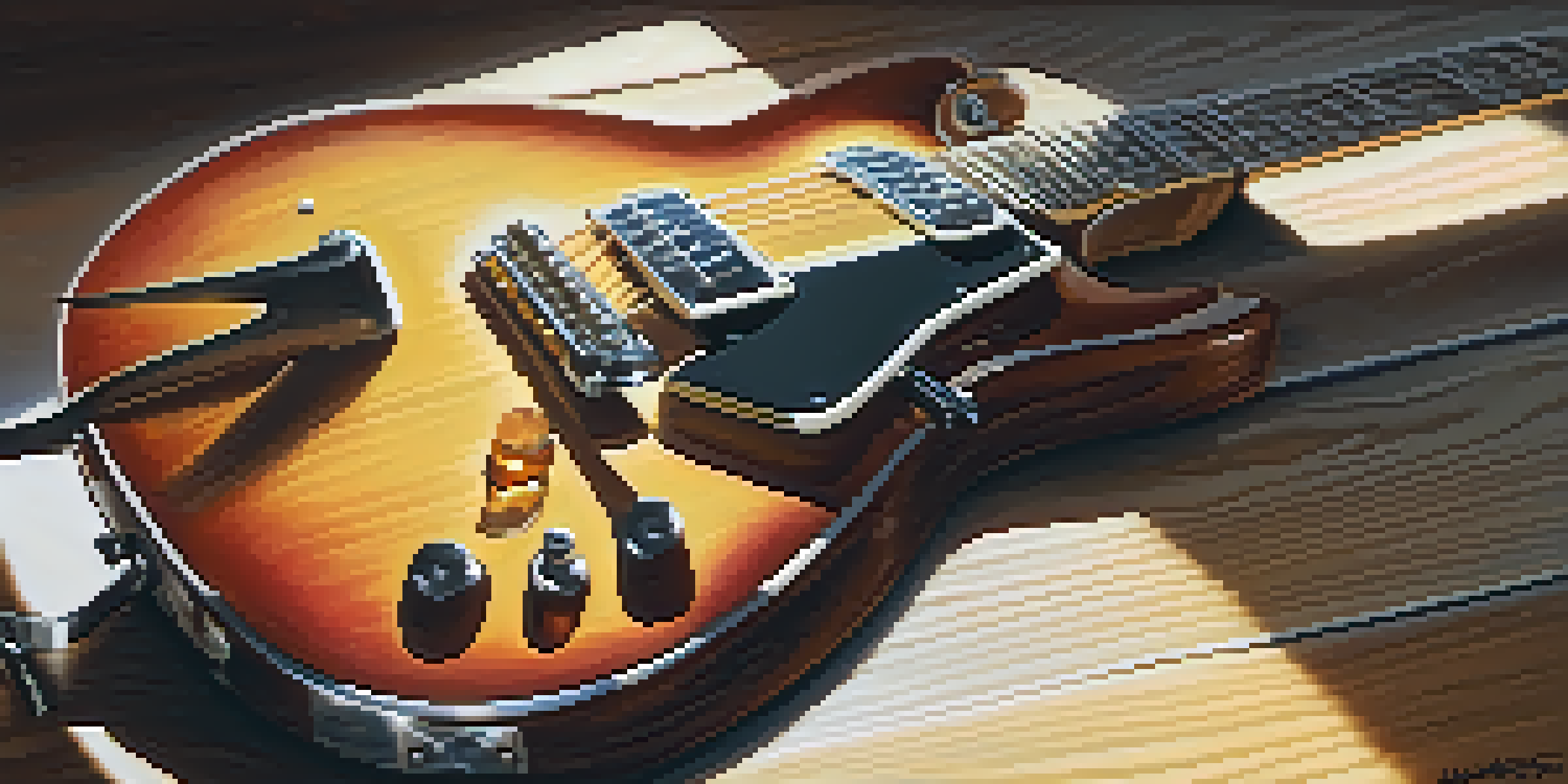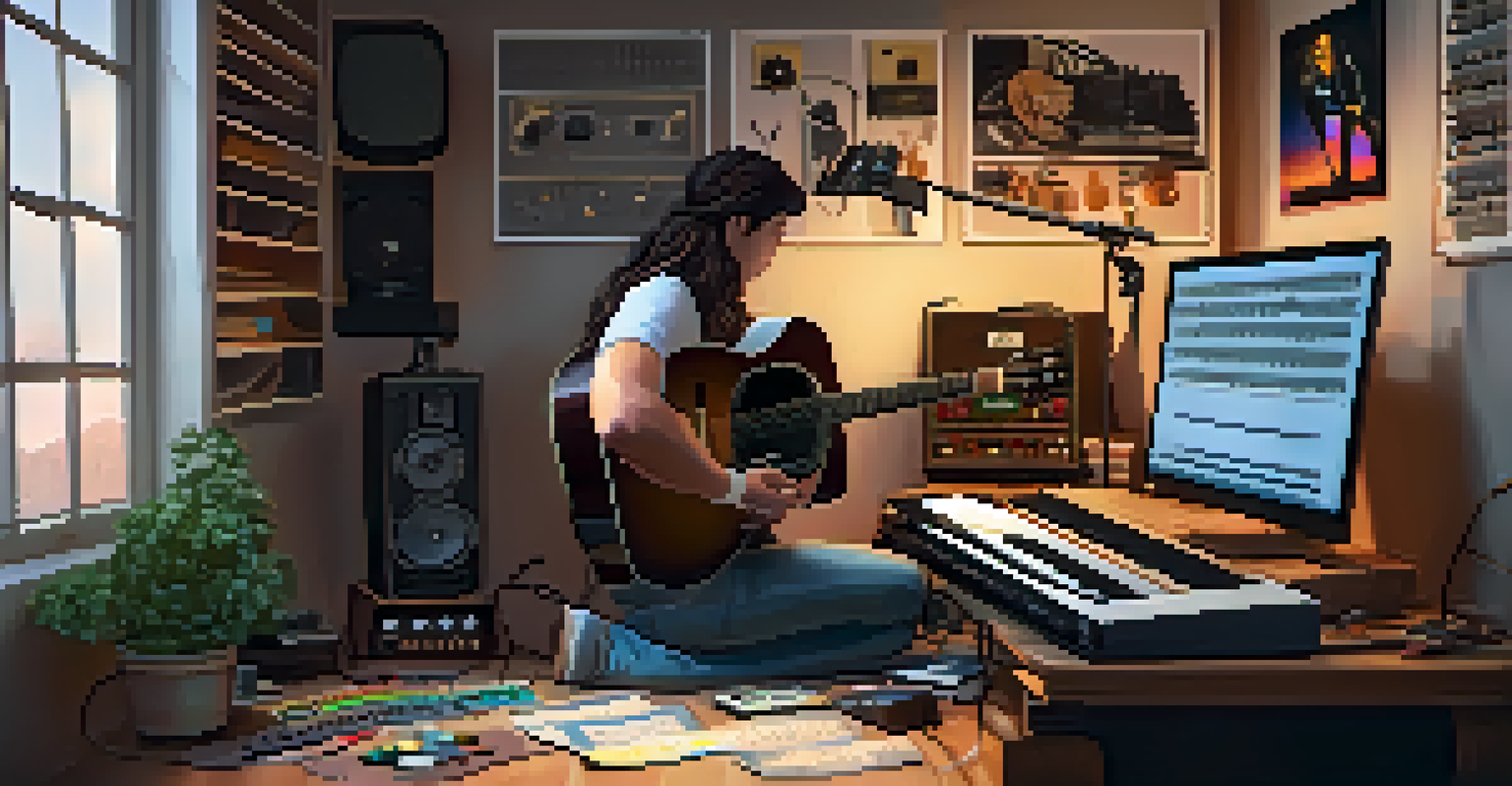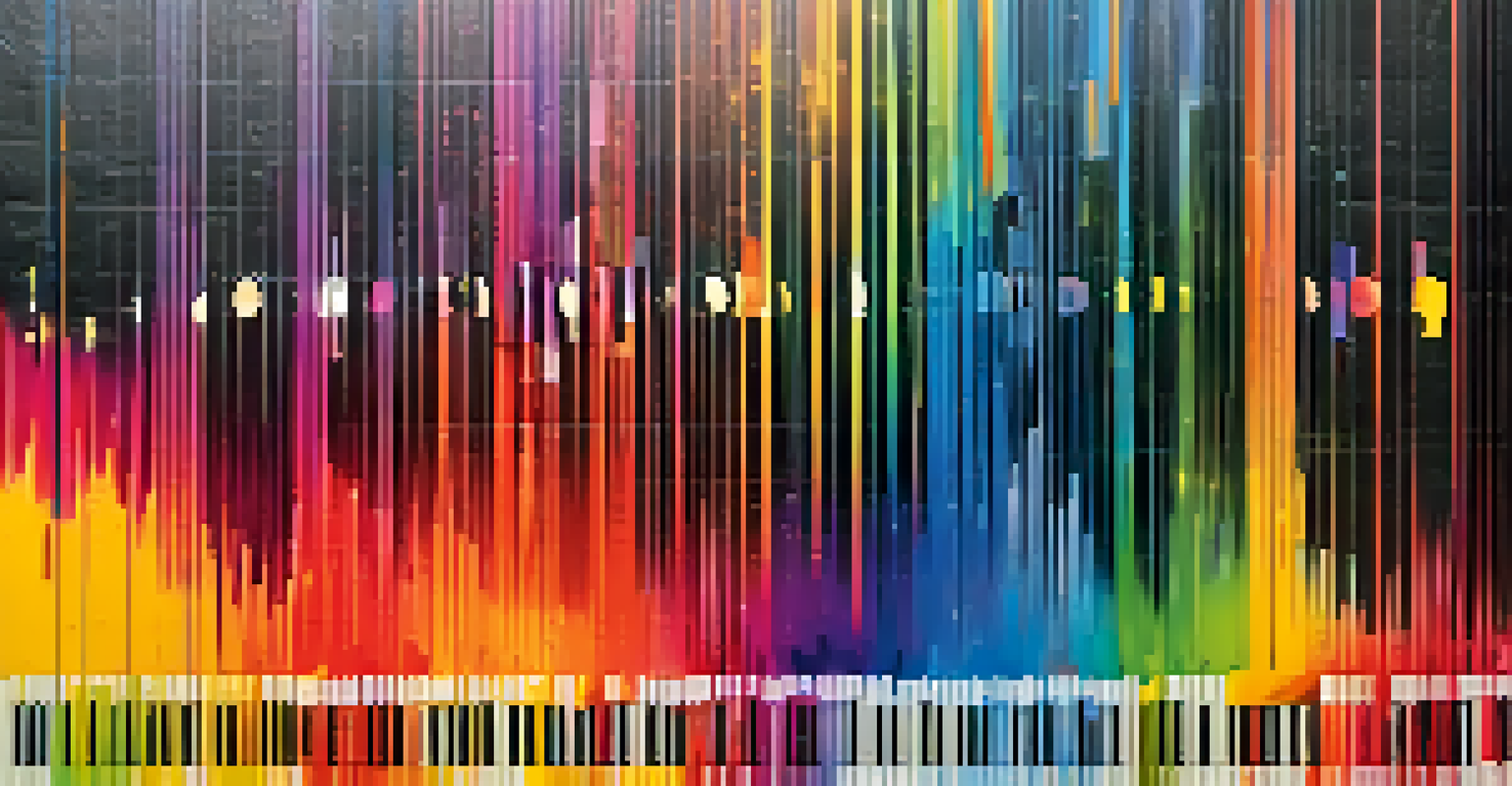The Basics of EQ: Shaping Your Guitar Tone Effectively

Understanding EQ: What Is It and Why Does It Matter?
EQ, or equalization, is a powerful tool in shaping sound. It allows you to adjust the balance of frequencies in your guitar tone, which can make a significant difference in how your music resonates with listeners.
Music is the shorthand of emotion.
Think of EQ as a sculptor chipping away at a block of marble. By carving out certain frequencies, you can enhance the overall sound, making it clearer and more defined, much like revealing the beauty within the stone.
Without understanding EQ, your guitar tone may end up muddy or harsh. By mastering this concept, you can create a more refined sound that complements your playing style.
The Frequency Spectrum: Breaking It Down
The frequency spectrum for guitars typically ranges from about 80 Hz to 5 kHz. Understanding this range is crucial for effective EQ adjustments, as each frequency plays a unique role in shaping your tone.

For instance, lower frequencies (around 80-200 Hz) give your sound warmth and body, while mid frequencies (200 Hz to 2 kHz) add clarity and presence. Higher frequencies (above 2 kHz) can introduce brightness and airiness to your tone.
Understanding EQ Enhances Tone
Mastering EQ allows guitarists to refine their sound by adjusting frequency balance for clarity and definition.
By recognizing where different elements of your guitar sound fall within this spectrum, you can make targeted adjustments that enhance your overall sound. This knowledge helps you avoid unnecessary frequency clashes.
Using EQ to Enhance Your Guitar's Natural Sound
One of the key benefits of EQ is its ability to enhance your guitar's natural sound. By boosting certain frequencies, you can bring out the characteristics that make your instrument unique.
The beauty of sound is a reflection of the beauty of the heart.
For example, if your guitar has a bright, cutting sound, you might want to emphasize the high frequencies to highlight that quality. Conversely, if your tone is too bright, you can reduce those highs to create a more balanced sound.
The goal is not to completely alter your tone, but rather to refine it. Think of it like seasoning a dish; just the right amount can elevate your sound without overpowering its essence.
Common EQ Techniques for Guitarists
There are several common EQ techniques that guitarists use to shape their tone effectively. One popular method is the 'cut and boost' technique, where you cut unwanted frequencies and boost desired ones.
Another technique is using a notch filter to eliminate problematic frequencies, often referred to as 'ringing' or 'muddy' sounds. This can be particularly useful in live settings where feedback can occur.
Frequency Spectrum is Key
Recognizing the frequency spectrum helps in making targeted EQ adjustments that complement your guitar's natural sound.
Experimenting with these techniques will help you find the right balance for your sound. It’s all about knowing when to apply a gentle touch and when to make bold adjustments for maximum impact.
The Importance of Context: Mixing and Live Performance
Understanding EQ isn't just important for your guitar sound; it’s crucial for mixing and live performance as well. In a mix, each instrument occupies a space in the frequency spectrum, and EQ helps prevent frequency overlap.
When performing live, your environment can drastically change how your guitar sounds. Using EQ allows you to adapt your tone to different venues, ensuring that your music translates well wherever you play.
By considering the context in which you'll perform or record, you can make informed EQ choices that enhance your overall sound, making it more cohesive within a band or as a solo artist.
The Role of EQ in Different Genres of Music
Different music genres have distinct tonal characteristics that can be shaped through EQ. For instance, rock guitarists often favor midrange frequencies for a punchy sound, while jazz players might focus on warmer tones.
Understanding the typical EQ preferences in your genre can guide your adjustments. For example, in pop music, a brighter, more polished sound often prevails, requiring boosts in higher frequencies.
Context Matters in EQ Usage
Adapting EQ settings for different genres and performance environments ensures your guitar tone translates well in any setting.
Being aware of these genre-specific tendencies allows you to tailor your guitar tone to suit the style of music you're playing, giving you a competitive edge and a more professional sound.
Tips for Practicing and Experimenting with EQ
To truly master EQ, practice is essential. Start by experimenting with different EQ settings on your guitar and listening closely to how each adjustment affects your tone.
Try recording yourself with various EQ settings and then listen back. This will help you identify what works best for your sound and refine your ear for subtle differences.

Remember, there are no hard and fast rules in music. Use your creativity and intuition when adjusting EQ to find the sound that resonates with you and your artistry.